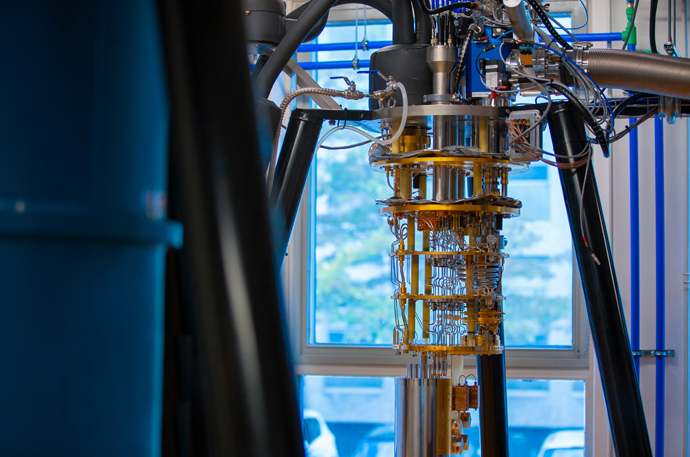Intel Corp. has shared details about Horse Ridge II, a quantum control chip that it describes as a milestone toward enabling large-scale quantum machines.
The company revealed the chip on Thursday during a virtual event hosted by its Intel Labs Unit.
Horse Ridge II emerged from the company’s efforts to tackle what it sees as a major obstacle to scaling quantum hardware: cabling. The qubits powering today’s quantum computers run inside cryogenic refrigerators cooled to temperatures just above absolute zero.
Those qubits, in turn, are controlled by conventional electronics kept at room temperature. The control electronics are connected to the qubits by cables running into and out of the cryogenic fridge.
The issue Intel sees is that as quantum computers grow more powerful and the number of qubits they contain increases, the number of cables necessary to link the qubits to the control electronics will have to increase in lockstep. Past a certain point, the amount of wiring required by a quantum computer could simply exceed the available space. The company therefore believes current cabling methods are a barrier to building large-scale quantum computers.
Enter the Horse Ridge II chip. It serves the same function as the traditional control electronics used to orchestrate qubits today, but instead of interacting with the qubits via cables, it performs the task wirelessly using radio frequency pulses. Intel hopes that approach will be the key to reducing cabling requirements.
“We believe that increasing the number of qubits without addressing the resulting wiring complexities is akin to owning a sports car, but constantly being stuck in traffic,” said Jim Clarke, the director of Intel’s quantum hardware research group. Intel, Clarke added, expects Horse Ridge II to “bring us one step closer toward the development of a ‘traffic-free’ integrated quantum circuit.”
The chip brings several improvements over the first-generation Horse Ridge chip Intel debuted last year. One new feature of Horse Ridge II is that it can read the state, or information, currently stores in a qubit, which Intel says makes it possible to retrieve data more power-efficiently and using less memory than traditional methods. Another innovation is the ability to simultaneously manipulate quantum gates, circuits that form a basic building block of quantum computers.
Intel has also equipped the chip with an extra onboard, programmable microcontroller designed to reduce so-called crosstalk. That’s the term for a phenomenon wherein the qubits in a quantum computer interfere with another one and produce computational errors. According to Intel, the new microcontrollers can mitigate such interference by strategically filtering the radio frequency pulses with which Horse Ridge II manipulates qubits.
The company says that Horse Ridge II is currently capable of operating at temperatures as low as 4 kelvins above absolute zero. Intel hopes eventually to place the chip directly inside the cryogenic refrigerators in which quantum computers keep their qubits, which operate at millikelvin temperatures even closer to absolute zero.
Photo: Intel
Since you’re here …
Show your support for our mission with our one-click subscription to our YouTube channel (below). The more subscribers we have, the more YouTube will suggest relevant enterprise and emerging technology content to you. Thanks!
Support our mission: >>>>>> SUBSCRIBE NOW >>>>>> to our YouTube channel.
… We’d also like to tell you about our mission and how you can help us fulfill it. SiliconANGLE Media Inc.’s business model is based on the intrinsic value of the content, not advertising. Unlike many online publications, we don’t have a paywall or run banner advertising, because we want to keep our journalism open, without influence or the need to chase traffic.The journalism, reporting and commentary on SiliconANGLE — along with live, unscripted video from our Silicon Valley studio and globe-trotting video teams at theCUBE — take a lot of hard work, time and money. Keeping the quality high requires the support of sponsors who are aligned with our vision of ad-free journalism content.
If you like the reporting, video interviews and other ad-free content here, please take a moment to check out a sample of the video content supported by our sponsors, tweet your support, and keep coming back to SiliconANGLE.


